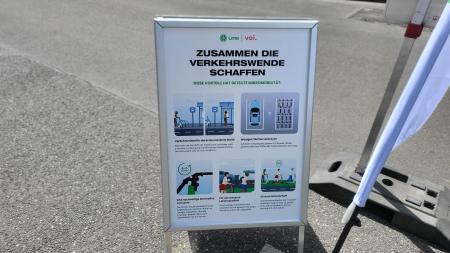Our members are dedicated to improving road safety and sharing their knowledge with the wider community. Here, you can explore our members' good practices – initiatives that have been assessed for their effectiveness in addressing a road safety problem and have proven results.
Get inspired – and sign up to share your good practices too!

Wednesday, June 19, 2024
Between 2018 and 2022 there where 93 fatalities and 894 serious injury collisions in Irish roads which involved motorcyclists. No specific road safety programme aimed at motorcyclists existed at that time. It was identified that the vast majority of these collisions occurred over the Summer months and almost 50% at weekends and many involved leisure riders or those retuning to motorcycling. Ireland has a large number of rural roads, ideal for leisure riding but this also increases risk through road topography and additional hazards which adversely impact motorcycle safety compared to other road users.

Wednesday, June 19, 2024
Asociatia Drum Sigur analyzed and researched the following design errors:
- incorrect use of signs for yielding priority in intersections (Give Way and Stop signs) (error found in most countries of the world)
- the formulas used to calculate the length of acceleration/deceleration lanes at road junctions are incorrect (they do not take into account the impact of heavy vehicle traffic, as well as the volume of traffic flows) (error found worldwide)
- the use of staggered pedestrian crossings at traffic lighted intersections has negative effects on pedestrian traffic in most cases. (case analysis for all the staggered pedestrian crossings in Bucharest)
- identification of design and execution errors for T-type intersections, roundabouts, turbo-roundabouts or interchanges in some cities in Romania.
- analyzing some design errors on certain streets in Bucharest and proposing measures to improve road safety and traffic flow.
- incorrect use of signs for yielding priority in intersections (Give Way and Stop signs) (error found in most countries of the world)
- the formulas used to calculate the length of acceleration/deceleration lanes at road junctions are incorrect (they do not take into account the impact of heavy vehicle traffic, as well as the volume of traffic flows) (error found worldwide)
- the use of staggered pedestrian crossings at traffic lighted intersections has negative effects on pedestrian traffic in most cases. (case analysis for all the staggered pedestrian crossings in Bucharest)
- identification of design and execution errors for T-type intersections, roundabouts, turbo-roundabouts or interchanges in some cities in Romania.
- analyzing some design errors on certain streets in Bucharest and proposing measures to improve road safety and traffic flow.

Wednesday, June 19, 2024
Met de Alliantie Stop Verkeersongevallen geven wij gratis trainingen aan kwetsbare doelgroepen zoals kinderen (10-14 jaar), senioren en fietsers/e-bikers. Met deze gratis trainingen willen wij zorgen dat de doelgroepen en onze klanten (bestuurders van zowel grote als kleine voertuigen) beter op elkaar ingespeeld zijn en willen wij de verkeersongevallen met 10.000 gevallen naar beneden brengen.

Wednesday, June 19, 2024
In Zusammenarbeit mit den führenden Wiener Sharing-Anbietern Voi und Lime hielten wir am 29.5.24 einen „E-Scooter-Aktionstag“ beim Burgtheater ab mit dem Ziel die Sicherheit und verantwortungsvolle Nutzung von E-Scootern stärken. Das Angebot richtete sich an aktive Nutzer:innen und an die Allgemeinheit, um die Vorteile der E-Sharing-Mobilität für alle zugänglich zu machen. Besucher:innen konnten sich an Info-Ständen über Verkehrsregeln und korrektes Parken informieren, insbesondere im Hinblick auf die seit 2023 erhöhten Parkstrafen in Wien. Ein Sicherheitsparcours bot den Teilnehmenden die Gelegenheit, ihre Fahrkünste zu erproben und zu verbessern. Unter Anleitung unserer ausgebildeten Trainer:innen wurden hilfreiche Tipps zur sicheren Nutzung geübt. Es wurden kostenlos Helme verteilt, um das Tragen von Schutzkleidung zu fördern. Diese Maßnahmen sollen einen sicheren und verantwortungsvollen Umgang mit E-Scootern in Wien unterstützen und die städtische Mobilität nachhaltig verbessern.

Tuesday, June 18, 2024
El municipio de Benidorm acoge anualmente a miles de residentes y visitantes que realizan desplazamientos diarios en el interior de la ciudad y, gracias a las iniciativas tomadas por el municipio en los últimos años, se ha logrado que estos desplazamientos se realicen mayoritariamente a pie o mediante modos blandos de transporte. A pesar de los beneficios resultantes, el número de usuarios vulnerables frente a accidentes en materia de seguridad vial se ha visto incrementado en consecuencia.
Es por ello por lo que la Estrategia de accesibilidad y seguridad vial engloba una serie de medidas desarrolladas a lo largo y ancho de todo el municipio para mejorar las condiciones en estos desplazamientos a pie, y específicamente en algunos de los itinerarios peatonales con mayor relación de puntos de riesgo de circulación vehicular. De esta forma, la estrategia va dirigida al conjunto global de la ciudadanía, aunque algunas de las medidas se centran de forma particular en un colectivo específico, como será el caso de los entornos escolares o en las zonas con frecuente paso de usuarios de avanzada edad.
Es por ello por lo que la Estrategia de accesibilidad y seguridad vial engloba una serie de medidas desarrolladas a lo largo y ancho de todo el municipio para mejorar las condiciones en estos desplazamientos a pie, y específicamente en algunos de los itinerarios peatonales con mayor relación de puntos de riesgo de circulación vehicular. De esta forma, la estrategia va dirigida al conjunto global de la ciudadanía, aunque algunas de las medidas se centran de forma particular en un colectivo específico, como será el caso de los entornos escolares o en las zonas con frecuente paso de usuarios de avanzada edad.